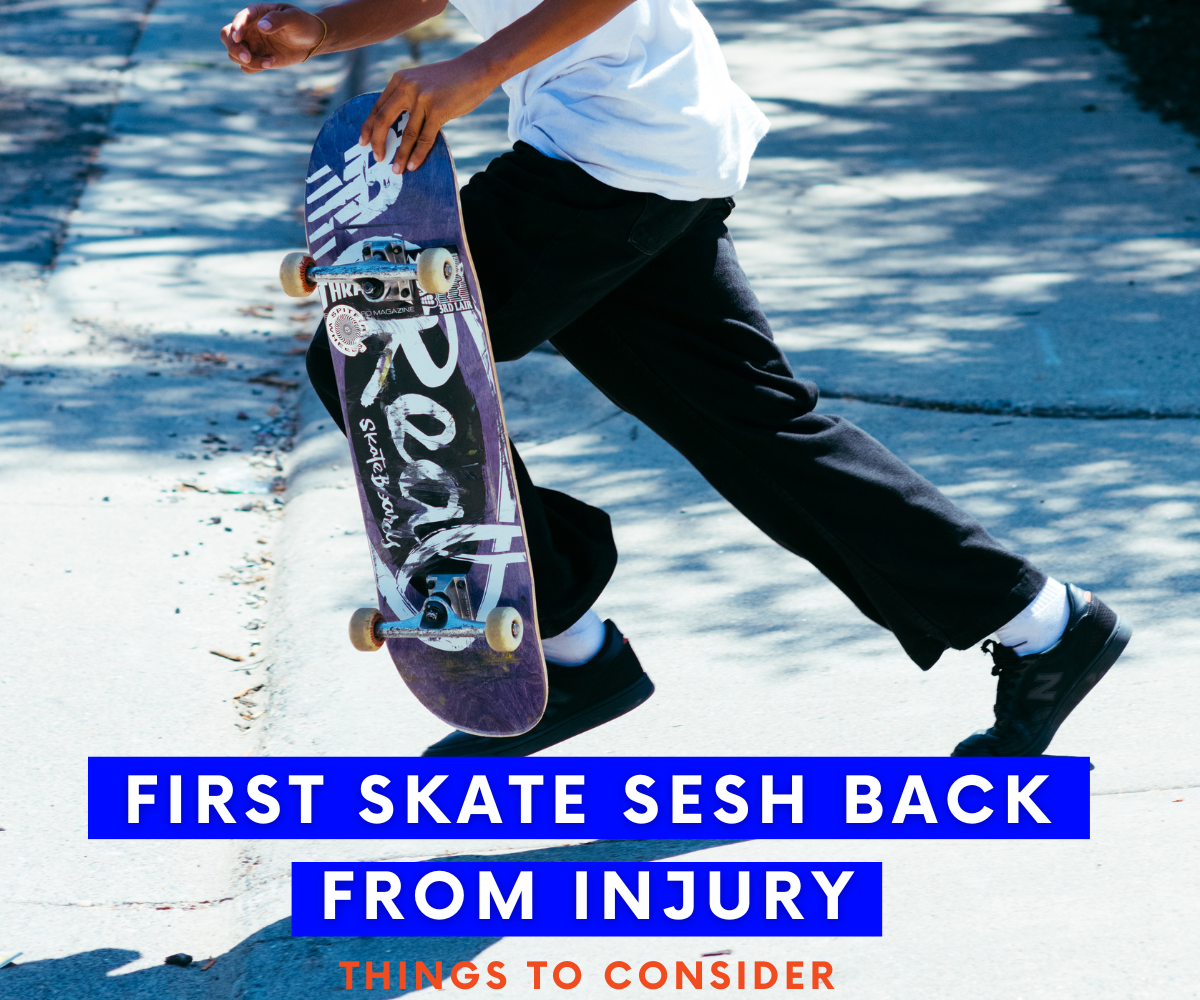When you finally get back to skating after a long lay-off you feel like a kid in a candy store. You are pumped to be back and the last thing you want is a set of rules being placed on you for that skate given you waited so long. Whilst it also goes against the nature of freedom skating is known for, from a rehab stand point setting some basic goals for the sesh can be crucial in ensuring you live to skate another day.
As good as your rehab program can be there is nothing quite like skating in itself. The positions we adopt, the forces placed on the body, the positions we are flung into. It’s unpredictable in nature and its variability is huge.
That first sesh back from a major injury is huge in gathering information on just how well the injury will hold up against all of this. This is why the first few weeks are so important for re injury. So while the last thing you may want to do is place restrictions on that first glorious sesh back, here are some guidelines from a coach’s stand point for you to consider:
1 – Set a time frame:
Keep the sesh at 60 mins max. Remember it’s not how you feel in the sesh that’s important it’s how you pull up the next day. When you are warm and juiced up from the sesh you can often get a false perception of how you are doing. The best feedback will be given to you the following day and the last thing you want is to wake up and realise you over-did it and have to go backwards.
2- Work on fundamentals:
The things you know how to do really well will give you a scope as to how far off the feeling of being comfortable is and most importantly how the injured area feels compared to before the skate. This is where familiarity helps to create a sense of flow to get things back quickly.
3 – Don’t push fatigue:
Keep the lines short and yourself fresh by taking frequent breaks when you feel fatigue setting in. This will allow you to not only get quality reps in but also eliminate chances of making stupid mistakes made due to fatigue.
4– Don’t get caught in any battles:
Big or small, the repetitive motion and potential to fall is what we want to eliminate here in that first sesh back. If something isn’t working just move on. The perceived difficulty in this will come down to the skill set of the skater. For some this could be a kickflip, for others it could be a switch tre down a 5 setter. If you had a trick you could do easily before the injury and it’s not working on the day, leave it for the sessions to come.
5 – Have Fun:
You did it, you are finally back! Enjoy it. You will get your tricks back. You will find your groove in the following weeks, IF you live to skate another day. So focus on having fun and keeping it light hearted. The rest will come back in time if we get out of that initial re-injury period so enjoy it. You’re back =)

